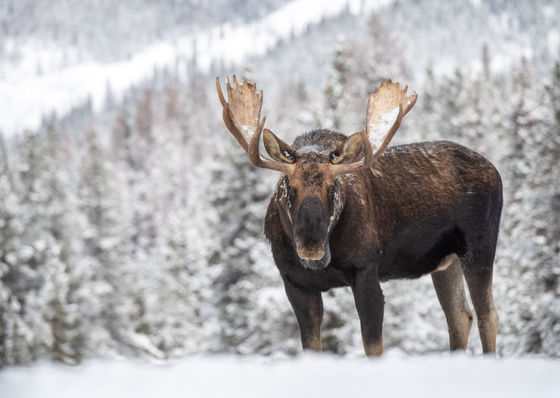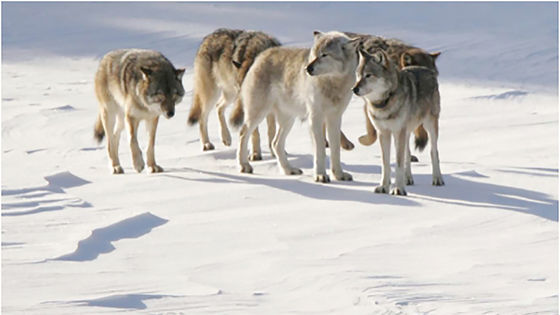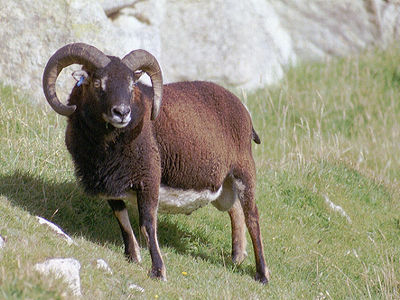A case is reported in which a single wolf became a ``savior'' who revived the forest

In Lake Superior, located on the border between the United States and Canada, there is an island called Isle Royale, known for its rich biodiversity, but due to disease and inbreeding, the number of wolves living on the island has drastically decreased, and the number of wolves living on the island has decreased dramatically. Entire ecosystems were also on the verge of collapse. However, a case was reported in the scientific journal Science Advances in which a male wolf brought 'genetic rescue' to the forest by crossing an ice bridge that only exists during the winter and entering the island.
The far-reaching effects of genetic process in a keystone predator species, gray wolves | Science Advances
How a lone 'immigrant' wolf revived a forest ecosystem
https://phys.org/news/2023-08-lone-immigrant-wolf-revived-forest.html
The Royal Island wolf pack is descended from wolves that migrated to the island in the 1940s, and their primary prey is elk. In the environment of a solitary island floating in a lake, wolves, moose, the island's only large herbivorous animal, and the growth of fir trees, which are the moose's food, are closely related, so the island's creatures have been studied by zoologists for many years. has provided valuable ecosystem data.

However, in the 1980s, the number of wolves plummeted from 50 to 12 due to the
The decline of wolves due to inbreeding was a major problem for the island's ecosystem as a whole. Because moose eat up to 14 kilograms of vegetation a day, they had a huge impact on the balsam fir, a major tree in the boreal forest and also famous as a Christmas tree.
What saved this crisis was M93, an individual wolf who immigrated to the island in 1997. This individual, affectionately referred to by researchers as the 'Old Gray Guy,' is not related to the wolves that originally lived on the island, and because it was physically superior, it was able to protect the herd and hunt down the large size of the elk. It was useful for hunting.
Among the following, the wolf with bright fur in the center of the pack is M93.

M93 quickly became a breeding male in three herds on the island, producing 34 offspring and greatly improving the herd's genetic health and hunting success. In 2008, two years after M93's death, 59.4%, or more than half, of the wolves on the island had M93's blood.
As wolves bred and the overpopulated elk population decreased, the island's trees began to grow at a tremendous rate, regenerating the forest and benefiting the many plants and animals that depend on it.
'The arrival of M93 represented a powerful genetic rescue from the inbreeding decline that characterized wolf populations at the time,' the researchers wrote in their paper.
The benefits of M93 lasted for about 10 years, but ironically the issue of inbreeding came up again as M93 successfully bred and most of the wolves on the island were descended from M93. M93 himself started breeding with his own daughter after his female wolf mate died, and other members of the pack continued to inbreed, and in 2015, the island's wolves were once again on the verge of extinction. Ta.

Fortunately, a recovery program started in 2018 has been successful, and there are currently about 30 wolves and just under 1,000 elk living on the island.
'The key takeaway from this story, which began with gene rescue and ended with forest ecology, is that the genes of one individual predator can be used to transform whole groups of predators, prey groups, etc.,' the researchers wrote in their paper. 'And we have clarified how this can affect forests and their ecological processes.'
Related Posts:







